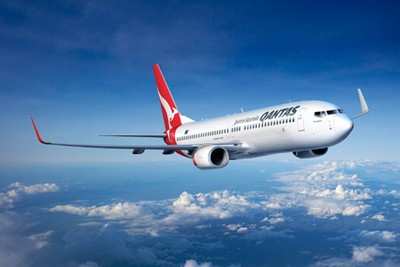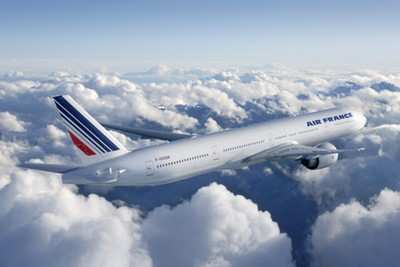Values Market At $3.2 Trillion Over Next 20 Years
 Boeing forecasts a $3.2 trillion market for new commercial
airplanes over the next two decades, driven by an increasing demand
for airplanes to replace older, less efficient aircraft.
Boeing forecasts a $3.2 trillion market for new commercial
airplanes over the next two decades, driven by an increasing demand
for airplanes to replace older, less efficient aircraft.
The revised Boeing 2008 outlook, released Wednesday, calls for a
market of 29,400 new commercial airplanes (passenger and freighter)
by 2027, with a balanced demand in aircraft by region. The forecast
takes into account what Boeing terms the industry's "near-term"
challenges, including a slowing worldwide economy, surging fuel
prices, slowing traffic growth in some markets, and concerted
action by airlines to balance costs and revenues.
"We're facing a very dynamic situation today in the commercial
aviation industry," said Boeing Commercial Airplanes Vice
President, Marketing Randy Tinseth. "This year's forecast is rooted
in today's realities, but also recognizes the nature of a long-term
outlook."
The influence of current market conditions is reflected in the
2008 outlook, with replacement airplanes taking a greater share of
demand (43 percent) than
previously forecast (36 percent) -- due to the
loss of economic viability of older aircraft in light of higher
fuel costs.

In addition, Boeing forecasts a slightly smaller fleet size at
the end of the 20-year period (35,800) than predicted in its
previous outlook (36,400). Compared with today's world fleet of
19,000 units, this represents an annual increase of 3.2 percent per
year -- the same as the estimated economic growth rate.
Also noteworthy is the fact that as a result of strong orders
the last three years, more than 30 percent of the forecast is
already in backlog.
"Over the more than 40 years that Boeing has been forecasting
the commercial aviation market, we've experienced other challenges
with their own dynamics and their own impact on global air travel.
What we've learned is that our industry, which is based on the need
to transport passengers and freight via our global aviation system,
is extremely resilient," Tinseth said.

Based on that perspective, the forecast combines today's market
environment with a long-term view that portrays how air transport
will be transformed over the next 20 years. It's an outlook that
indicates continued strong fundamentals underlying the need for new
airplanes -- including economic growth, world trade, aviation
market liberalization, and new aircraft capabilities.
These new airplanes will accommodate a forecasted 5 percent
annual increase in global air travel, and a 5.8 percent annual
increase in air cargo traffic.
Over the next 20 years, passenger and cargo airlines will take
delivery of:
- Regional Jets: 2,510 units ($80 billion) --
Declining segment as airlines "up-gauge" to single-aisles due to
capacity, economic, environmental constraints
- Single-Aisles: 19,160 units ($1,360B) --
Largest segment by units
- Twin-Aisles: 6,750 units ($1,470B) -- Largest
segment by investment
- 747 and larger: 980 units ($290B) -- Small but
significant market
Single-aisle airplanes will make up the bulk of the deliveries
during the next 20 years. Strong domestic and intra-regional air
travel growth in emerging Asia-Pacific markets, along with
continued growth of low-cost carriers worldwide is driving demand
in this segment.

"We're seeing an increasing share of airplane deliveries to the
Asia-Pacific region, as well as the Middle East, Latin America, and
the Commonwealth of Independent States (CIS)," Tinseth said. "The
result is a much more geographically balanced and more stable
long-term market, which is less vulnerable to swings in regional
economies or other variations in demand."
 Airbus Racer Helicopter Demonstrator First Flight Part of Clean Sky 2 Initiative
Airbus Racer Helicopter Demonstrator First Flight Part of Clean Sky 2 Initiative Diamond's Electric DA40 Finds Fans at Dübendorf
Diamond's Electric DA40 Finds Fans at Dübendorf ANN's Daily Aero-Term (04.23.24): Line Up And Wait (LUAW)
ANN's Daily Aero-Term (04.23.24): Line Up And Wait (LUAW) NTSB Final Report: Extra Flugzeugbau GMBH EA300/L
NTSB Final Report: Extra Flugzeugbau GMBH EA300/L Classic Aero-TV: 'Never Give Up' - Advice From Two of FedEx's Female Captains
Classic Aero-TV: 'Never Give Up' - Advice From Two of FedEx's Female Captains






